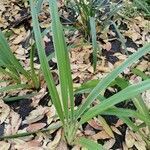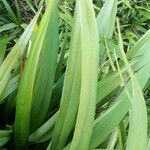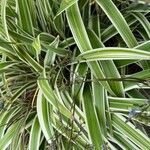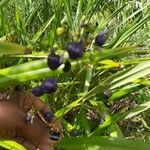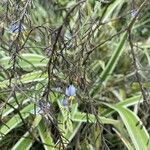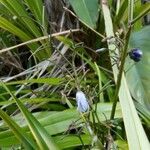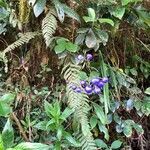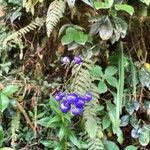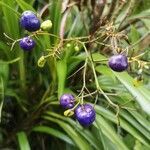Rhizome creeping, 5--8 mm thick. Leaves sword-shaped, gradually narrowed at both ends, 30--80 × 1--2.5 cm, leathery, midvein abaxially and margin usually scabrous, apex obtuse. Scape 1--2 m, with several bractlike stem leaves 3--8 cm. Pan-icle laxly branched, 10--40 cm, usually with flowers borne distally. Pedicel 0.7--2 cm, usually arcuate. Tepals spreading, white, greenish white, yellowish, or bluish purple, linear-lanceolate to narrowly oblong, 6--7 × 3--3.5 mm. Stamens shorter than tepals; filaments geniculate near middle, dilated distally. Style ca. 6 mm. Berries deep blue, subglobose, ca. 6 mm in diam., 5-or 6-seeded. Fl. and fr. Mar--Aug. 2 n = 32*.
Plants glabrous. Leaves 50–80 × 1.5–2(–3) cm; blade lustrous, margins finely serrate, apex obtuse, basal sheath margins purplish; midvein impressed adaxially, keeled abaxially, keel finely serrate. Inflorescences: panicles 10–15 cm; flowers distal; bracts membranous. Flowers: tepals spreading, sky to light blue, yellow basally, 5-veined, 6 mm; filaments geniculate near middle; pedicel 7–15 mm. Berries 4–5 mm. 2n = 16, 32.
It has a creeping rhizome 5-8 mm thick. The leaves are sword shaped and 30-80 cm long by 1-2.5 cm wide. They narrow at both ends. The flower panicle has loose branches and the flowers are at the end. They can be white, yellow or purple. The fruit are deep blue berries 8 mm across.
